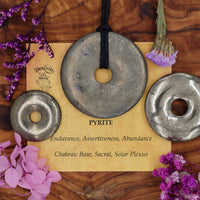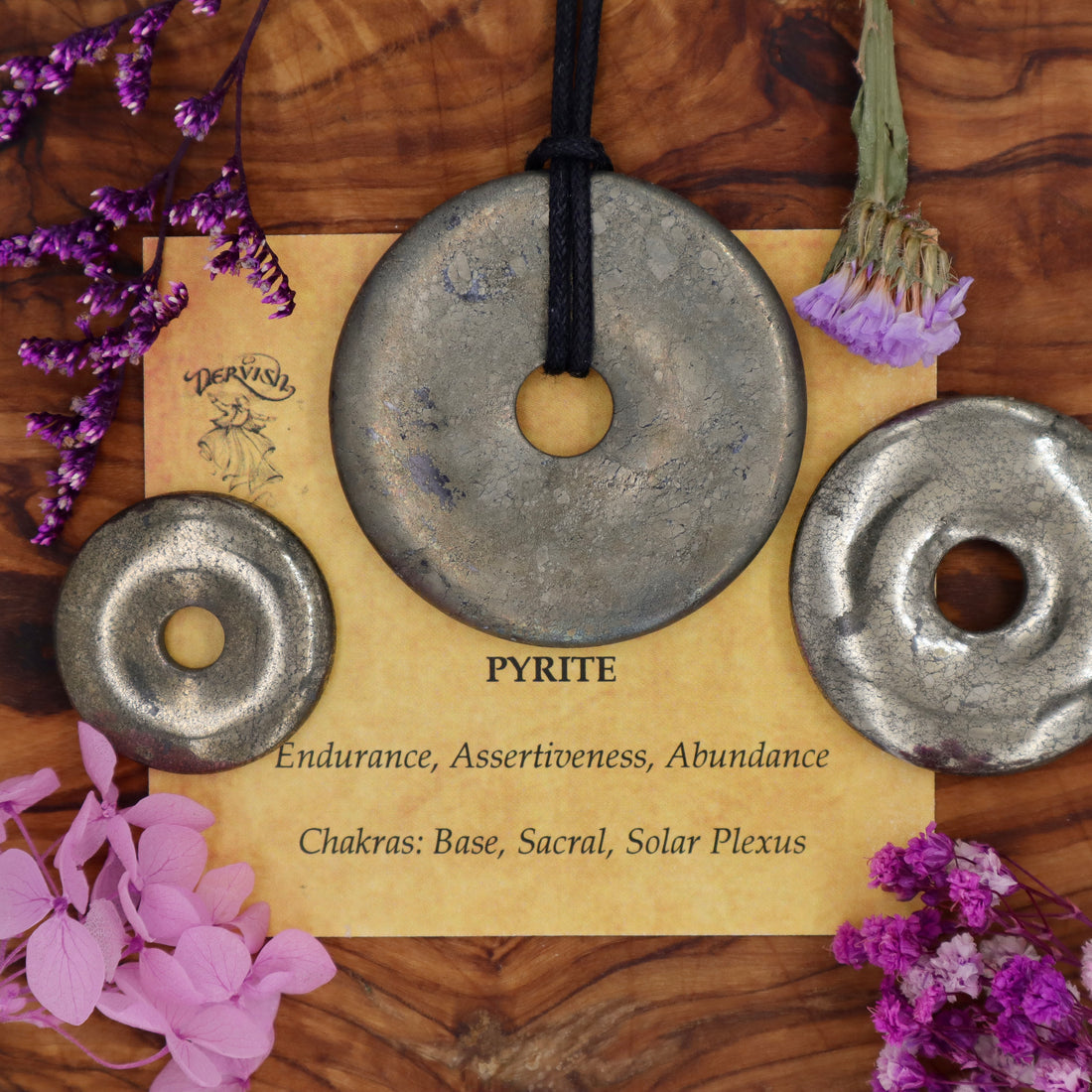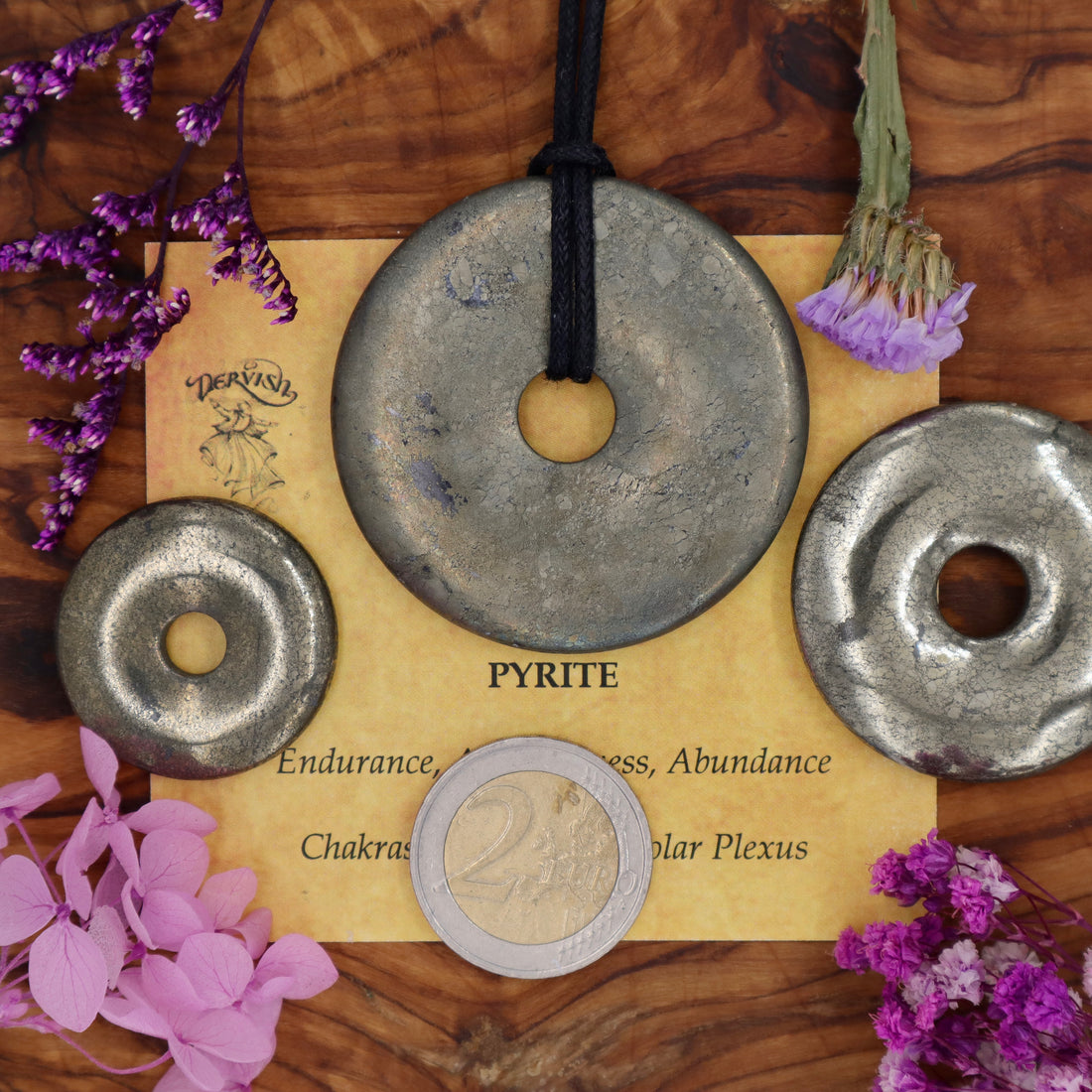

Pyrite Donut Pendant (30mm, 40mm, 50mm)
Endurance. Manifestation. Abundance
Chakras: Base, Sacral, Solar Plexus
Birthstone: Leo
Hardness: 6 - 6.5
Composition: Ferrous Sulphate
Formula: FeS2
Colour: Brass yellow, gray-yellow
Oils/Herbs: Sandalwood, Grapefruit, Lavender, Bergamot and Clary Sage.
Other Descriptions:
Pyrite is a brass-yellow mineral with a bright metallic luster. It is the most common sulfide mineral. It forms at high and low temperatures and occurs, usually in small caches worldwide.
Metaphysical Healing Properties
The sparkling colour reminds us of our quest for enlightenment and self-realization. The vibration offers us strength and the by harmonising our Solar Plexus Chakra it allows us to use our willpower when it is needed to overcome struggles rather than allowing the struggles to overcome us. Polarities exist but if we get caught in extremes, this can overwhelm us. Pyrite assists in helping us find the middle ground through facilitation of a higher perspective; freeing us from extremes.
The vibration of pyrite is uplifting and its warm metallic shine brings about feelings of happiness and encourages us to love openly, giving and receiving joyously.
Harmonizes /Combines with: Zincite and Carnelian for male sexuality. Prehnite, Heliodor, Libyan Gold Tektite, Golden Labradorite and Citrine to strengthen Solar Plexus energy. Use with Hematite for grounding.
History:
Archaeological evidence reveals that humans have valued Pyrite for millennia, and small pieces have been found in numerous prehistoric burial sites. Pyrite’s name comes from the Greek word ‘pyr’, meaning fire because when struck with iron, Pyrite will emit sparks. During the Mesoamerican Classic period (CE 250-900), both the Mayans and the Aztecs used Pyrite to create mirrors. Most Pyrite mirrors were used as part of the ceremonial dress of priests and noblemen, typically worn on the back or belt. Larger mosaic mirrors were placed in temples or royal tombs. Pyrite mirrors likely symbolised noble lineage. Today Pyrite has lost much of its glamour and is often dismissed as “Fool’s Gold.” The nickname refers to a common mishap during 19th century gold rushes in which uneducated miners believed they had struck gold when they had actually found Pyrite.
Disclaimer: Crystal properties are listed for information purposes only and are not intended to replace medical advice. Always consult a physician for proper medical treatment.


